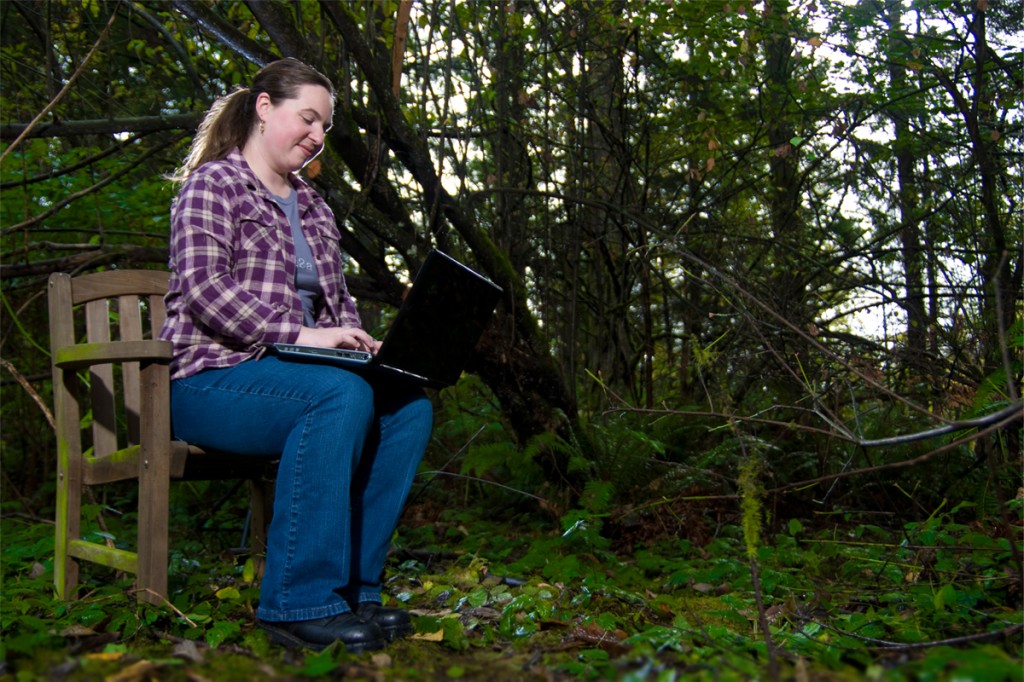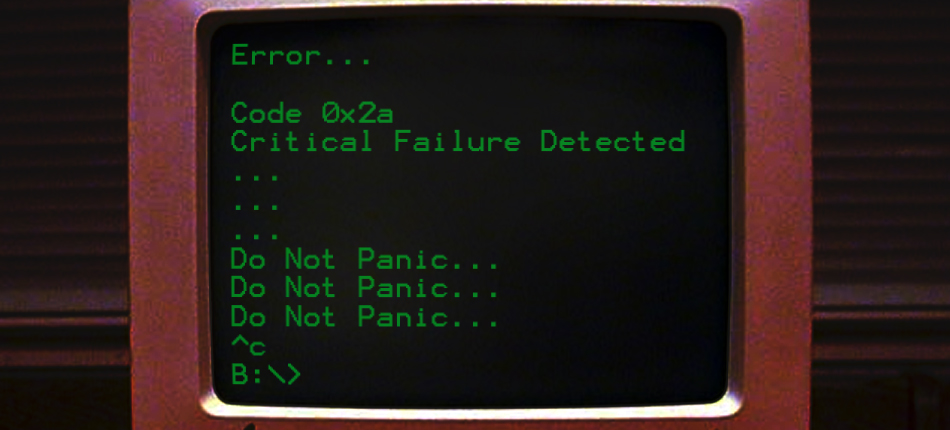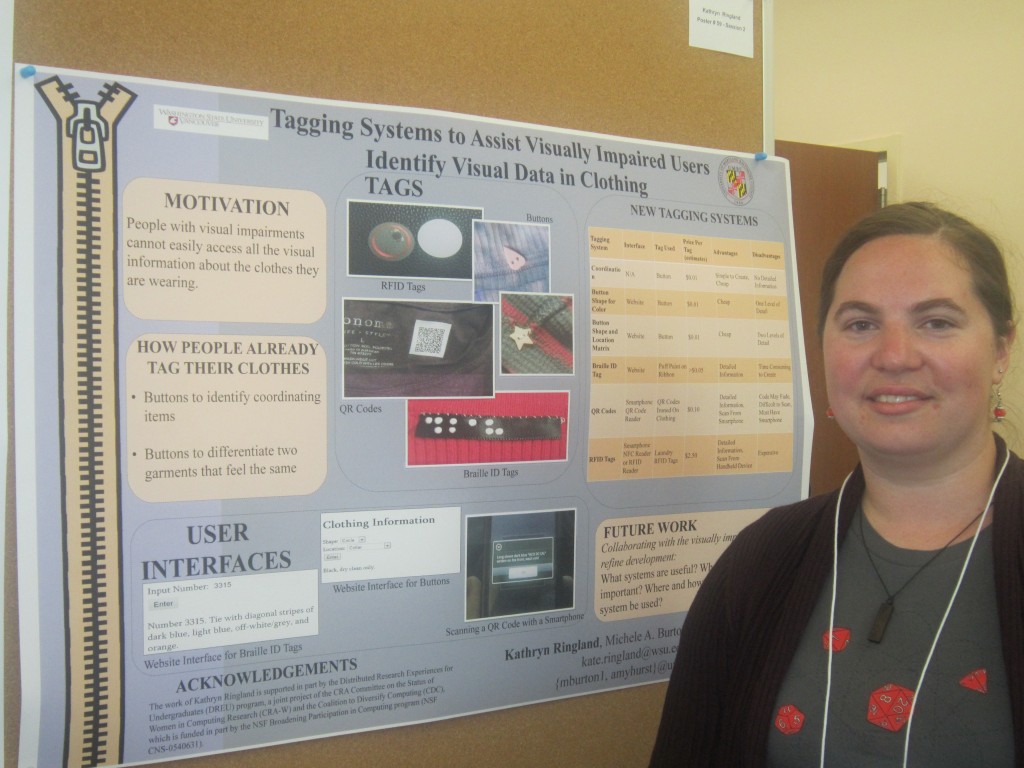I’m happy to announce that I will be the opening keynote at the Education in Games Summit this year in Melbourne, Australia, October 14. This summit is for school teachers to learn more about using games in their education practices. I’ll be talking about my Autcraft research, as well as speaking more broadly about how we can use games in inclusive education.
Tag: teaching
A downloadable PDF version of my diversity statement can be found here.
Accessibility and diversity have always been the cornerstone of my research and teaching philosophies. All my research projects have focused on underrepresented communities, particularly people with disabilities. As a woman who has overcome the adversity associated with having a disability, I recognize the unique challenges inherent in academia. I draw on this personal experience to give me insight to connect with and mentor students from diverse backgrounds. Accordingly, inclusiveness is central to my research, teaching, and service goals.
My desire to create a more equitable and inclusive community has been reflected throughout my research agenda both nationally and internationally. Locally, I have served as an instructor for Technology in the Workplace workshops for young adults with autism for the past four years. These workshops have served approximately 60 students per year, and helped to place high school students with jobs and entry into college. My research has also brought me to work with people with visual impairments in the Washington DC area through the University of Maryland Baltimore County. I assisted the National Federation for the Blind in their national elections with the deployment of more accessible voting machines. Internationally, I have worked in both Mexico and Japan with autistic children, developing affordable software systems to be used in local communities. In each of these projects, my overall goal was to use my expertise to serve the needs of the local community.
I have taken on a variety of leadership roles through participation in community outreach and diversity initiatives. At Washington State University Vancouver, I founded the Women in Computing group. The representation for women in this computer science program was 5%; I was the only woman in my cohort. Therefore, as the inaugural President, I organized an outreach event to promote computing for women, including speaking on a panel about my experiences as a student. There was overwhelmingly positive feedback from the over 40 local community college women in attendance. This past academic year, I stepped into a prominent leadership role and served as the elected Informatics Graduate Student Association President, which included organizing and hosting weekly networking opportunities with notable visiting scholars. As part of my service role in the Assistant Professor position, I would continue working on committees to promote diversity in STEM programs and outreach to potential students.
As an incoming underrepresented PhD student, I participated in the Diverse Educational Community and Doctoral Experience (DECADE) Competitive Edge program. Eager to share my experiences with others, I completed training in the Mentoring Excellence Program and served as a mentor to other underrepresented students entering the Informatics program. My mentees have graduated and gone on to graduate school and into industry. Under my mentorship, one of the women who attended my Women in Computing event successfully completed her four-year degree in Computer Science. Before her degree she held a minimum wage position, but is now working as a software programmer for a large company and plans on returning to graduate school.
Growing up and being in Seattle for much of my life, I was fortunate to live in such a diverse community and that has become integral to the balance I would like to see reflected in the students and staff that I might have the opportunity to work with. In all aspects of my career, research, teaching, and service, I will continue to achieve broader impact through inclusion and accessibility.
A downloadable PDF version of this statement can be found here.
I have taught in a variety of roles: Faculty Lecturer, Teaching Assistant (TA), and mentor of both undergraduates and graduate students. As Faculty Lecturer for a new course, Introduction to Assistive Technology, I developed the syllabus and course content. I created a class that focused on my teaching goals and ensured that my students would be learning skills and gaining knowledge critical for their future careers. Through these experiences, I have honed my own teaching philosophy and have adjusted to meet the needs of large and small classroom settings. I believe effective teaching is achieved by three fundamentals; reflection, adaptability, and accessibility (See Figure 1). I think these mechanisms all work in combination to produce dynamic and impactful learning interactions.
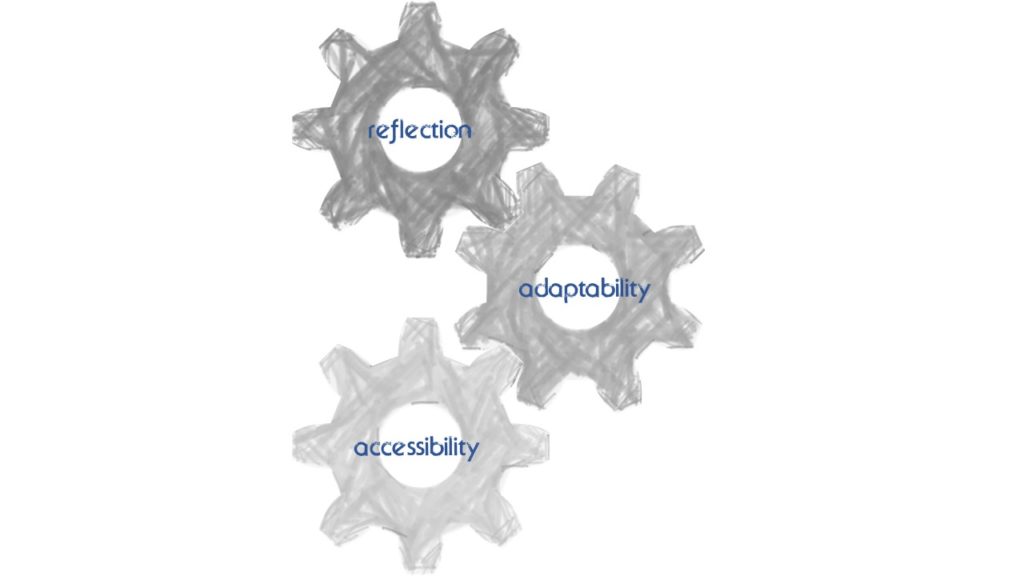
Figure 1. Reflection, adaptability, and accessibility working together for effective teaching.
Reflection
As an instructor, I frequently challenge my classes with open-ended questions about course material, which motivates students to reflect on their own life experiences. This practice helps students connect with the material and deepen their learning in the classroom. For example, when discussing learning aids in my Introduction to Assistive Technology course, I asked students to consider learning tools they had used throughout their education. This conversation led students to transform and broaden their understanding of who uses learning supports. I also asked my students to bring in news articles related to course material at the beginning of each week. The students would contextualize the subject of the class into their everyday lives. These weekly reflections became a way for students to connect themes from week to week. In course evaluations, students have noted the “stimulating discussions” lead to “lots of student engagement.” Finally, as an instructor and mentor, I am constantly evaluating the effectiveness of my teaching through frequent student feedback. Through both formal and informal mechanisms, I can respond quickly to class dynamics.
Adaptability
A common hindrance to students is when a teacher has a preconceived mindset of their learning styles and abilities. I have observed when this type of rigidity has led to disrupted learning experiences. In one case, I was a teaching assistant in a large lecture where laptops were banned. This resulted in students attempting to circumvent rules and an unnecessary focus on policing them. More importantly, students with disabilities were outed and obstructed from learning. In designing my own classroom, this kind of rule goes against my philosophy of removing learning obstacles and supporting student needs. I kept these goals in mind when I was hired at Chapman University to design and teach the first Introduction to Assistive Technology class. Using the flexibility of creating my own curriculum, my syllabus focused on disability advocacy and inclusion. Listening to previous student feedback I altered my courses to allow the use of laptops and even incorporated their use during class discussions – having students search for ideas to share. From this experience, I learned that being open to changing the rules can have unforeseen outcomes: happier, more engaged students and greater access to learning for everyone.
Accessibility
I have worked to create an accessible, interactive learning space in both my classroom and laboratory. While in-class conversation is good and can be conducive to student learning, I understand that some students are unable to participate in this way. Instead of penalizing students for being afraid or unable to speak up in large classroom discussions, I offer alternative avenues for participation such as email, online forums, and smaller discussion groups. While helping the students find alternative means of communicating in the classroom, this also helps manage larger, growing class sizes. Inclusion also means allowing for a diversity of thought both in learning styles and in how to solve problems, including using multiple methods to evaluate student learning. I also bring in additional voices as guest lecturers to expose my students to new viewpoints. For example, in my Assistive Technology course, I invited a woman of color who also has a disability to share her own experiences. In my course evaluations, one of the most meaningful comments I received was, “You were so accepting and kind to me, I knew you cared about me and my disabilities. Thank you.” This is the support I would like all my students to feel when they attend my classes.
Future Direction & Example Courses
My experiences as an instructor and mentor have prepared me to teach both large and small college course settings. In reflecting on my own work as an instructor, I believe in adjusting to the needs of the students and creating an environment that works for the dynamics of the group. I would like to continue advancing my knowledge of pedagogy by taking more courses and workshops.
With my background in both technology and social sciences, I am prepared to teach a variety of courses. In future, Computer Supported Cooperative Work, Research Methods, Gender and Information Technology, and Technical Foundations. I am also prepared to teach new courses such as Computer Games & Society and Introduction to Assistive Technology.
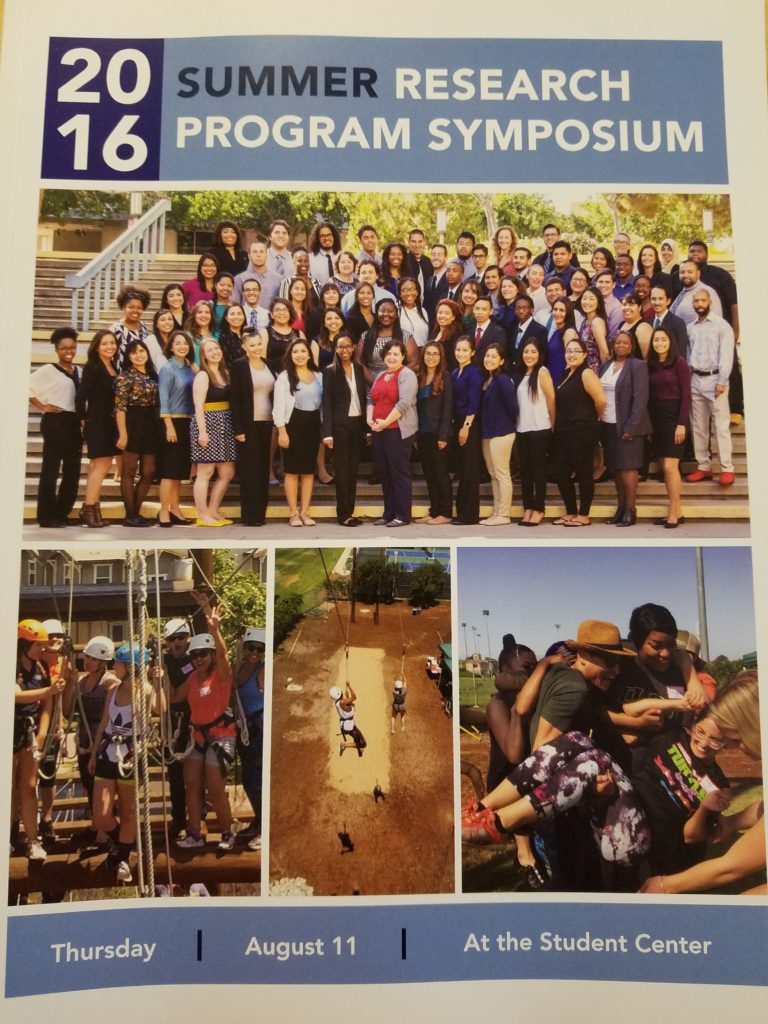
Cover to the Summer Research Symposium program.
Today was the end of the summer research programs on the UCI campus. This summer I was a mentor to both an incoming PhD student in the Competitive Edge program and an undergraduate student in the SURF program. The summer ended with a wonderful research symposium where half the students presented their work via oral presentations and the other half presented posters. We then had an awards ceremony lunch where everyone was recognized for the great work they did this summer.

SURF Undergraduate, Aminah Tamimi, giving her presentation on 3d printing from Minecraft.
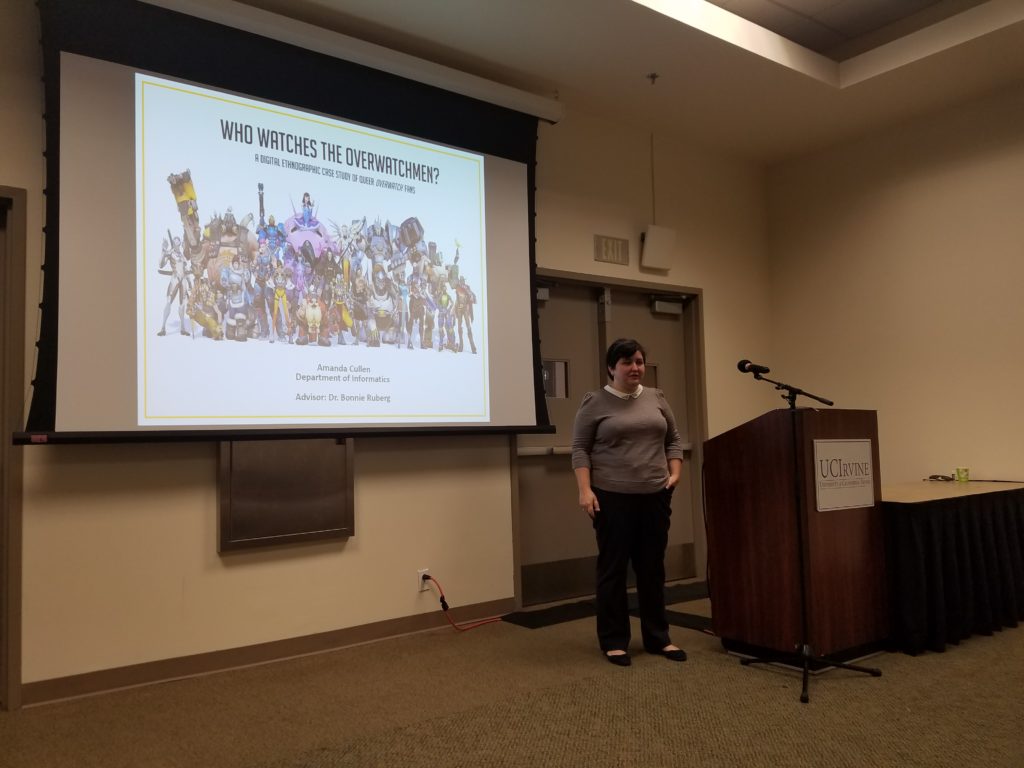
Competitive Edge PhD Student, Amanda Cullen, giving her presentation on Overwatch.
These programs are a really nice way to help students prepare for graduate school. As someone who participated in a similar program (DREU) as an undergrad and in the Competitive Edge program, I can attest to their usefulness.
As a mentor for students in these programs I am also extremely grateful to the programs for the opportunity to give back and be a mentor. As someone who is passionate about increasing diversity in academia and in STEM programs, I am always excited about chances to “do my bit.” In this instance, working with both Aminah and Amanda was a wonderful experience. Not only are they both hardworking students who are going to go great places, but they are generous with me as I felt my way through my role as a peer mentor. I plan on staying in touch with them (especially Amanda since we sit next to each other in lab) as they progress along their careers and continue to be helpful when I can.
A big thanks to everyone who made this summer fun and full of learning!

A handful of experiences and people helped to transform me from a lost undergraduate who was thinking of dropping out, to a successful, ambitious graduate student. I struggled for many years as an underrepresented student, both as a woman and as a student with a disability, to complete my undergraduate degree and find my niche in the world. Now, not only do I want to make a career of researching assistive technology, I also want to be a mentor for those who follow me, just as I had mentors to guide my way.
As the only woman in my undergraduate computing classes, I faced adversity and isolation. I sought support and attended the Grace Hopper Celebration of Women in Computing Conference (GHC). Upon learning that I was one of many women facing isolation in their computing courses, I founded an ACM-W Chapter for women in computing at Washington State University Vancouver (WSUV). I felt the need to create greater participation of college women in computing, a support network for them, and a way to mentor freshmen and high school girls. As the chair of the chapter for the first year, I planned a campus-wide event to encourage women to pursue computing careers and spoke at a panel discussion. The event hosted 40 women from campus and the local community and received very positive feedback. The women from the community college who had not considered pursuing a four-year degree until they heard our panel inspired me. I have continued to mentor one young woman who is now pursuing her undergraduate degree in computer science and intends to continue on to graduate school.
On my graduate school campus, University of California Irvine (UCI), I am involved in a similar group: Women in Information and Computer Sciences (WICS). I volunteered with WICS in summer 2013 to mentor middle and high school girls interested in computing. In fall 2013, I also helped start a graduate chapter of this group. As a graduate student representative for UCI, I attended GHC 2014 as a student volunteer. My connections with these groups led me to other opportunities, such as conducting research and presenting at two academic conferences, as well as mentoring underrepresented undergraduates.
Through my experiences with the women in computing groups, I have realized how important mentorship is for those in the early stages of their careers. Through teaching and mentoring, I have been able to ignite my passion for helping others through research with students and also pass along valuable skills that they will use in their future studies. During my first year as a graduate student, I led a diverse team of undergraduates, all of whom are underrepresented minorities, in the development of a whole-body interface application on the Microsoft Kinect for children with autism. I encouraged my team to work together to solve problems and learn how to collaborate effectively. I also coached them in giving a presentation to the lab about their work. Continuing this project, I have expanded the scope of the software, and have begun working with a professor from the Dance Department to create new avenues of therapy for children with autism. One of the undergraduates I mentored has since graduated with a B.S. in Informatics and is now applying to graduate school.
In an effort to serve my local community, I volunteer as an instructor for technology use workshops for young adults with autism who are transitioning into the workplace from high school. In a more formal setting, I have also had the opportunity to be a teaching assistant for undergraduate level courses. As part of my responsibilities, I have worked with students one-on-one, as well as leading discussion sections of more than 40 students. In addition to regular discussion lectures, I also gave a guest lecture to the entire class of 250 students. Knowing the importance of mentorship for undergraduates, these varied teaching experiences increase my desire to seek a position that allows me to continue mentorship my PhD.
Last week, I co-led a lecture on GamerGate. This was meant to give our class (Computer Games and Society) a small taste of the GamerGate controversy. First time giving a large-lecture hall talk! It was nerve-wracking, but exciting. I’ll leave it here for you to enjoy.

